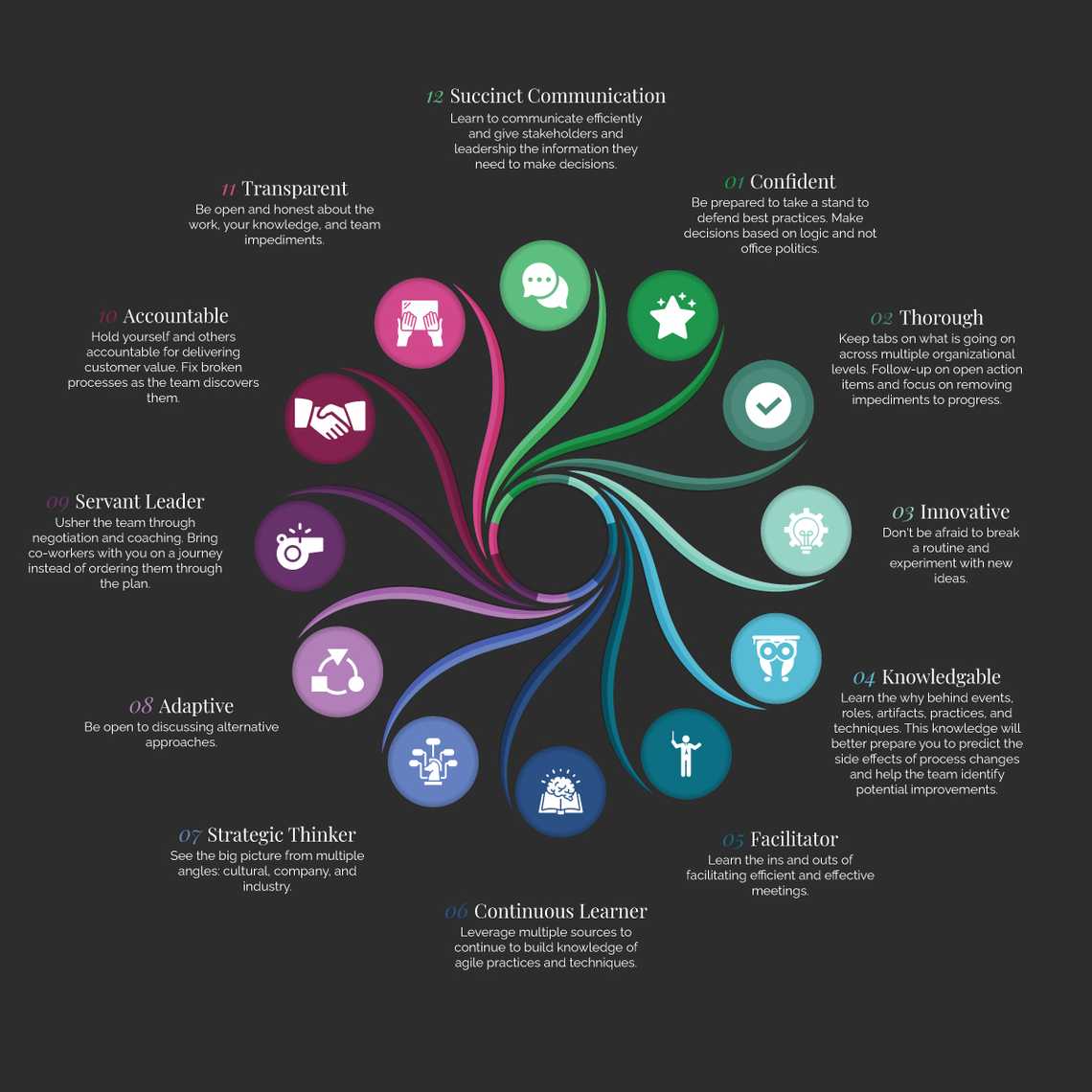Pet Peeves: 12 Scrum Master Anti-patterns

Employers aren’t always the best at defining clear expectations. Knowing what actions to avoid can be a valuable alternative (and sometimes easier to specify) when you’re trying to determine if you’re a good fit for a position.
Background
I recently went through a barrage of job interviews on the hunt for a remote Scrum Master position. I loathe job hunting because it feels like such a waste of time. Instead of wallowing in the frustration of return on investment for the time I spent filling our redundant applications, I chose to treat every interview as a learning opportunity.
One of the five questions that I asked every interviewer was, “What is your Scrum Master pet peeve?”.
Twenty-eight interviewers responded to this question. The answers were more enlightening than I’d imagined. I’ve taken their responses and boiled them down into twelve personas that describe the type of leader employers find vexing.
The Timid Turncoat
By far, the number one response (seven out of twenty-eight respondents) described Scrum Masters that have no backbone. This timid leader is ineffectual in providing air cover for the team, unable to say no to unreasonable requests, and easily swayed into making counter-productive decisions based on workplace politics.
Good Scrum Masters have a healthy level of confidence. They possess the ability to stand their ground and support decisions with logical explanations or anecdotes. The proficient leader understands that ignoring the elephant in the room is detrimental to the team and doesn’t shy away from difficult conversations. The best Scrum Masters seek to coach at all levels of the organization, with a ruthless focus on removing impediments and little regard for office politics and title ranks.
The Ball Dropper
The Scrum Master position requires a fair bit of task management and follow-through. When people ask me what I do for a living, I typically explain it as helping my team keep all the balloons in the air.
In The 8 stances of a Scrum Master, Barry Overeem just calls this “Management.” We manage impediments, processes, culture, and much more. There is a lot of balloons to keep in the air.
I can’t say I was shocked that the second most common response described the type of person that just can’t keep up with all these balloons.
Four of my interviewers described past experiences with Scrum Masters that didn’t follow up on action items, couldn’t get necessary process changes implemented, and ran ineffective retrospectives.

A certain level of accountability and ownership is required to be successful as a Scrum Master. This doesn’t mean that you must do all the work, but you’ll need processes to help the team stay on top of things. If you want to keep up with all the balloons, you must elevate your thoroughness and attention to detail.
The Fraidy Cat
The fraidy cat is the type of person that is afraid to try anything new. Before taking action, they must research and document everything to an extraordinary level of detail. This overhead hampers the team’s ability to adapt quickly.
“But, we’ve never done that before.”
-Fraidy Cat
Agile teams need the freedom to experiment. Iterations grant us the gift of a safe zone for experimentation. After all, how much can go wrong in just two weeks? If our experiment doesn’t work, we can try something different or go back to what we were doing before.

With three responses, this persona ties with the hurtful helper, which I’ll describe next.
The Hurtful Helper
The hurtful helper is one of those people that doesn’t have an excellent grasp on their responsibilities. They want to be helpful, so they scramble for tasks that they believe will aid others. Unfortunately, this commonly results in rework or other negative consequences. Taking the work away from the people who benefit from it robs them of a benefit they would have gained otherwise.

Examples of this are the Scrum Masters who point stories (without asking for team input), thus cheating the team out of an opportunity to ensure everyone understands the work. This activity also obfuscates the actual level of effort, assuming that the Scrum Master won’t be the one to implement the story.
Or perhaps they move stories around in the backlog without input from the Product Owner. The resulting priority leads to the delivery of lower customer value or rework for the Product Owner.
Another example is not recognizing which effort provides the most value for the team—for instance, focusing strictly on metrics and status reporting instead of removing systemic impediments.
To be successful as a Scrum Master, you need to understand the why behind the responsibilities of each role. You need to grok all the different events and practices so that you can understand potential side effects.
The best way to avoid becoming a hurtful helper is through gaining knowledge and asking powerful questions. You need to dig deep into every situation and ensure that you understand the root causes before acting. Building in-depth knowledge around the various agile approaches and the underlying reasons for each event, role, and technique will help you recognize where you can be the most useful.
The Feckless Facilitator
Meetings are a necessary evil, but they can also be a colossal waste of time. Hell, I was once gifted a pair of socks that say, “This meeting is bullshit.” Frustration has reached such a level that we’re now dedicating apparel to the expression of our abhorrence of meetings.
I was once on a project with daily meetings scheduled for thirty minutes. These meetings had more than ten attendees, no agenda, and would run over by an hour—what a waste.
Sadly, Retrospectives (which should be one of the most powerful tools to help a team improve) are at high risk of falling into the category of wasteful meetings. The event commonly devolves into a complaint session and results in no action items. Worse yet are instances where action items are identified but lead to no action. No wonder the retrospective is the first meeting that some teams seek to eliminate.
Have you ever had the pleasure of being in a meeting when it goes off the rails? The conflict escalates to yelling, and one or multiple people storm out or sit in tears? These instances can definitely leave an impression.

All the symptoms described above are the result of the absence of a competent facilitator. In my opinion, facilitation skills are one of the most valuable skills that a Scrum Master can possess. Based on their pet peeves, at least two of my interviewers would likely agree with that. If you can run an efficient and effective meeting, you are providing an invaluable service. In my career, I’ve met very few people that genuinely possess good facilitation skills.
The Amateur Agilest
This persona, the one prior (the feckless facilitator) and the next two (The lost leader and the zealot) all tied with two mentions.
The amateur agilest describes the person that took a two-day course and possesses grand visions of doubling their salary. They show up with their certificate and a checklist of what needs to happen. They follow the directions precisely as written, but they don’t truly understand the value of any of the practices.
They can parrot back what they’ve read from the Scrum Guide, but they lack the deep understanding to tailor the process to the team. They cannot bring valuable insights to the team that might help them increase delivery.
“Excellence/Perfection is not a destination; it is a continuous journey that never ends.”
-Brian Tracy
There is always something that your team can do to improve. As a Scrum Master, it’s your job to help the team uncover that through experimentation and open communication. It’s unlikely that your team’s biggest struggle is simply the inability to read the Scrum Guide.
To combat devolving into this persona, you should focus on continuous learning, experimentation, and experience. Don’t just limit your experience to your job, and don’t just limit knowledge to books. Join online communities, meetups, and listen to the anecdotes of others. Find mentors and devote time to learning your craft. When the Scrum Master gets better, they gain the ability to help the whole team get better.
The Lost Leader
One of the hardest things for a Scrum Master to balance is the focus between process improvement and understanding what the team is building. Somehow people have come to believe that I don’t think it’s valuable for the Scrum Master to understand the industry in which they work, which is wholly untrue. I prioritize understanding agile approaches, but I don’t think you can be successful with no knowledge of what your team is building and the customers they are serving.
You must at least know enough to facilitate a shared understanding between the team. Imagine how effective you’d be at facilitating a meeting where everyone in the room was speaking German if you didn’t know the language. The answer is: not at all.

However, understanding the intricacies of the business, knowing what the customers need, and retaining the history of how we’ve gotten where we are today is a lot of work. In fact, it’s a full-time job and the role of the Product Owner.
While the Scrum Master is off learning all that stuff, who keeps an eye on the process and the team’s pulse? And why duplicate the work that the Product Owner should be doing? There is a balance to be maintained.
The lost leader focuses only on the process, people, and tools. It becomes hard for them to facilitate an understanding of things that they themselves do not grasp. They cannot demonstrate how the team’s work contributes to the overall goals of the company.
One of my interviewers compared this to the kid in your middle school math class that managed to get the answer right but couldn’t show their work. It’s luck, not skill.
If you don’t want to fall into the trap of the lost leader, you need to make an effort to learn the business that you serve. Set aside a percentage of your time to understand the vision for the products that the teams build. This learning is a significant step toward becoming a strategic thinker, the opposite of a lost leader.
The Zealot
I’m a firm believer in the agile manifesto, but even I cringe in meetings when I hear someone (their tone seething with judgment) quote an agile principle. It’s as if I can see them wagging their finger back and forth in disapproval because someone has broken one of the ten commandments. Or maybe I should say 12 commandments.
I’ve watched agile leaders get so caught up in the process that they become an impediment to the team. Let us not forget that the first of those statements is about delivering working software.
The spirit behind agile is one of adaptability. I sometimes think of a team’s process as a jigsaw puzzle. We start with a bit of process, whether that is Scrum, Kanban, or XP. This starting point is similar to putting the border together. Then the practices and techniques that we add to that border over time are like puzzle pieces. The team evaluates each practice and technique to see if that piece can help fill a process gap. Sometimes there is some trial and error, and a piece doesn’t quite fit; you just place it back in a pile to evaluate again later. Over time our process emerges and changes.
It’s not a perfect metaphor, but I’m trying to say that your process should be emergent. I’m not the first person to say this.

David J. Anderson, the developer of the Kanban method, said this in an article reflecting on Kanban:
“Adaptive capability is required for resilience in complex environments. The improvements to workflow processes represent emergent behavior. The outcome cannot be predicted far in advance or several steps in advance. The future processes of the organization emerge rather than being designed.”
-David J. Anderson
But that’s not just a trait associated solely with Kanban. Gunther Verheyen, who describes himself as a Scrum Caretaker, had similar thoughts on Scrum:
“Scrum is a framework of rules, roles and principles. The framework helps people and organizations discover what works best for them. Their real process emerges, and is specific and fitting to their time and context.”
-Gunther Verheyen
The learning process that comes from experimentation is invaluable. Don’t be such a stickler for the rules that you cheat your team out of the ability to adapt just for the sake of following someone else’s process or framework.
The Autocratic Leader
Speaking of stamping out a team’s ability to adapt, that old command and control leadership style is a sure-fire way to stunt a team’s growth.

When I was a kid, I hated when my parents fell back on the ole’ “because I said so” card. Why does it matter if my room is clean? I’m the only one that lives in it. I’m sure I’m not the only obstinate child that shoved the mess under the bed and promptly returned to playing some Zelda.
A spoonful of servant leadership or leading from behind can go a long way toward nudging a team in the right direction without stamping out their innovation and potential for growth.
The Rescue Ranger
I’m a bit chagrined to admit that I shouldered this mantel in my early career as a Scrum Master.
The rescue ranger is overly concerned when a team member works one minute over the standard forty-hour workweek. They put metrics in place to ensure team happiness, are quick to assume everyone has too much work, and are armed with excuses for why the team cannot deliver business value.

One of the responsibilities of the Scrum Master is indeed to shield the team from distractions. It is also true that sustainable pace is a logical target. However, if these two ideas are your only driving force, you’re going to have an issue.
As my cousin once so eloquently put it to an eight-year-old complaining that she wasn’t having fun, “Life is not a party.”
These are great concepts to have, but you must balance them with accountability. Don’t be so quick to make excuses for the team regarding why they didn’t hit a deadline or make a commitment. Instead, help them uncover the actual root cause and solve the problem.
My husband used to tell our daughter that valid excuses were still just excuses. The dog may have eaten your homework, but maybe we need to put some effort into figuring out exactly how and why that happened so we can prevent it from being a systemic impediment in the future.
The Story Weaver
I’ve been in meetings where the sole focus was to craft an alternative perspective of the situation. I’m telling you, some of these leaders have mad skills that would rival even the most inventive of today’s journalists.
You enter a meeting somber, feeling as if the titanic just sank, but after the story weaver has his way, you leave excited about the fantastic opportunity to manufacture lifeboats.

Don’t be fooled into thinking that the story weaver is simply looking for the silver lining. This activity is a premeditated attempt to obfuscate the truth and importance of the situation. Treat attempts to manipulate the narrative as a direct attack on transparency. Without transparency, we lose our ability to inspect and adapt appropriately.
If you’re working in a culture where story weaving happens often, you should seek to change your culture. If you can’t change your culture by using logic and reason, change your culture by finding a new position.
The Socratic Supporter
I don’t know that I’ve ever met a single sole that enjoyed having their question answered by another question. My husband would likely tell you that getting an answer from me can sometimes be like subjecting himself to the inquisition.
The Socratic Supporter cannot communicate efficiently and succinctly. They frequently respond to inquiries with links to tickets, questions of their own, or a wall of text.
One of the odd moments of my life that I remember clearly for seemingly no reason was an afternoon where some co-workers were sitting around chatting. Somehow, like you do, we wandered onto the topic of how much the average elephant weighs. The following conversation ensued:
Co-worker: “Are we talking about Asian elephants or African elephants?”
Boss: “Do you know the weight of either?”
Co-worker: “No.”
Boss: “Then why did you bother to ask?”
Time is our most precious commodity. As a Scrum Master, you provide support to all different types of roles. You must learn to provide valuable responses that won’t require the asker to research to get the answer.

The Twelve Qualities Employers Do Want
I exaggerated each of these personas to make a point. It can be helpful to understand how the lack of a skill or quality can have an undesired effect on collaboration.
So, let’s flip the script for a moment and look at the opposing skills that would combat these personas and, therefore, hypothetically be what employers do want.

1. Confident
Be prepared to take a stand to defend best practices. Make decisions based on logic and not office politics.
2. Thorough
Keep tabs on what is going on across multiple organizational levels. Follow-up on open action items and focus on removing impediments to progress.
3. Innovative
Don’t be afraid to break a routine and experiment with new ideas.
4. Knowledgable
Learn the why behind events, roles, artifacts, practices, and techniques. This knowledge will better prepare you to predict the side effects of process changes and help the team identify potential improvements.
5. Facilitator
Learn the ins and outs of facilitating efficient and effective meetings.
6. Continuous Learner
Leverage multiple sources to continue to build knowledge of agile practices and techniques.
7. Strategic Thinker
See the big picture from multiple angles: cultural, company, and industry.
8. Adaptive
Be open to discussing alternative approaches.
9. Servant Leader
Usher the team through negotiation and coaching. Bring co-workers with you on a journey instead of ordering them through the plan.
10. Accountable
Hold yourself and others accountable for delivering customer value. Fix broken processes as the team discovers them.
11. Transparent
Be open and honest about the work, your knowledge, and team impediments.
12. Succinct Communication
Learn to communicate efficiently and give stakeholders and leadership the information they need to make decisions.
A Word about Math
If you’re counting, you might realize that I’ve accounted for twenty-nine responses even though there were only twenty-eight respondents. This irregularity is because two of the responses contributed toward two different personas, which brings the total to thirty.
However, one really nice lady insisted that she had no pet peeves, was a positive person, and chose to be in awe of others instead of focusing on their flaws. I have no reason to doubt her, but her response doesn’t contribute to this article, leaving us with twenty-nine.
Works Consulted
- The 8 stances of a Scrum Master
- Scrum Guide
- Strategic Thinking
- How to Demonstrate Your Strategic Thinking Skills
- There’s value in the Scrum Values
- Revisiting the Principles and General Practices of the Kanban Method
TLDR
These 12 personas describe anti-patters for a Scrum Master. Developing the offsetting skills for each persona will put you well on your way to ensuring you don’t rub your co-workers the wrong way.
Share
Table Of Contents
Fuel an Idea
Every week, I break down complex ideas, strip away the fluff, and give you experiments to turn knowledge into skills.
If that’s worth a coffee, consider fueling the next big insight.
No pressure. No guilt trips. Just impact.
Buy Me a CoffeeRelated Posts
Quick Links
Legal Stuff

